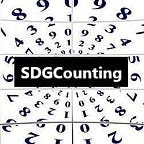The 2020 Multidimensional Poverty Index (MPI) and its Importance to Achieving the SDGs
By: Brady Press
The 2020 Multidimensional Poverty Index was listed as one of our team’s Top 10 Reports from last year’s United Nations High Level Political Forum (HLPF) and we continue to reference its findings. Released during a virtual HLPF session with panelists from OPHI, UNDP, WHO, the World Bank and select government officials, the report focuses on the declination of multidimensional poverty in many developing countries. Although the report uses data collected before the pandemic, it includes projections of COVID-19’s impact on global poverty. Here is a brief summary of the key findings:
What is the Multidimensional Poverty Index (MPI)?
Launched in 2010 and released annually, the MPI goes beyond monetary poverty to offer a more comprehensive view of global poverty that incorporates the lived reality of people’s experiences. The MPI measures poverty at the individual level by looking at 10 indicators across 3 dimensions: Health, Education and Standard of Living.
It pairs trends with data based off the $1.90 per day poverty rate to show progress in different forms: who is poor, how they are poor and the extent of their poverty. As of 2020, 1.3 billion people (22%) across 107 developing countries live in multidimensional poverty, meaning they are deprived in 1/3 or more of the 10 indicators used to measure MPI (shown in Figure 1 below).
MPI and the SDGs
The 10 indicators — nutrition, child mortality, years of schooling, school attendance, cooking fuel, sanitation, drinking water, electricity, housing and assets — are household deprivations that relate to SDGs 1, 2, 3, 4, 6, 7 and 11. The central promise of the SDGs is to “leave no one behind,” but people who are multidimensionally poor are being left behind in multiple SDGs simultaneously. Nearly all people (98.8%) experiencing multidimensional poverty are deprived in at least 3 of the MPI indicators, and 82.3% are deprived in at least 5.
The SDGs show the interlinkages between MPI indicators as they relate to poverty. They also present a framework to inform holistic policies that address multiple contributors to multidimensional poverty. Per the report:
“Interlinkages matter — a single mother who is illiterate and lacks clean water, sanitation and electricity but whose young children are all in school has a very different daily life from a mother with the same deprivations whose children are out of school. A family considered deprived according to indicators for nutrition, child mortality and cooking fuel would be further challenged if they also had to walk 30 minutes to obtain clean water or if they lived in a ramshackle house. The deprivation loads that people carry affect their behaviour, their ability to respond to policy interventions and their exit strategies from poverty.”
Figure 15 shows what percentage of people deprived in each indicator are deprived in other indicators at the same time — ranging from 0 additional indicators up to 9. Looking at the indicators most threatened by COVID-19 — nutrition and school attendance — we see that 80.4% of the 1.52 billion people deprived in nutrition are also deprived in at least one other indicator. For school attendance, that figure rises to 93.8%.
Progress on MPI
The report’s analysis of poverty trends, which incorporates data from 5 billion people across 75 countries, shows progress. Of the countries studied, 65 reduced their MPI value significantly over a set period of time.
Among those 65 countries, 62 had decreased the incidence of poverty and 23 countries saw reductions of more than 2% of the population living in poverty each year. Sierra Leone had the fastest reduction in MPI from 2013 (74%) to 2017 (58%), which occurred while the country was enduring the Ebola crisis.
Progress Before COVID-19
Pre-pandemic, 47 countries were on track to achieve the SDG 1 target of countries “nationally halving the proportion of men, women and children living in poverty” by 2030. Figure 12 below depicts this progress, while also showing that 18 countries were off track to meet this target. Of the 18 that were off track, 14 were in Sub-Saharan Africa and were among the poorest countries.
Projected Implications of COVID-19
Recognizing the possible weight of implications from COVID-19, the report also simulates how the pandemic may threaten progress on multidimensional poverty, estimating outcomes for both best and worst case scenarios. Focused on nutrition and children’s school attendance — the indicators most affected by COVID-19 — conservative and moderate projections show that the pandemic could place 490 million additional people into multidimensional poverty. This would reverse progress on poverty levels by 9.1 years:
What’s Next?
Considering multiple scenarios, the report shows that if the indicators leading to multidimensional poverty are not addressed, the pandemic could set progress back 3–10 years across 70 developing countries. However, historic examples of progress amid adversity — such as with Sierra Leone during the Ebola crisis — provide hope that set backs may not derail progress. But countries must continue to advance the SDGs and fight poverty, no matter what challenges arise, to avoid devastating results.
Brady Press is an Associate Director at Changing Our World, where she specializes in building strategic corporate citizenship programs. She is a consultant to SDGCounting and StartingUpGood, and is currently researching how COVID-19 is affecting the Sustainable Development Goals.
